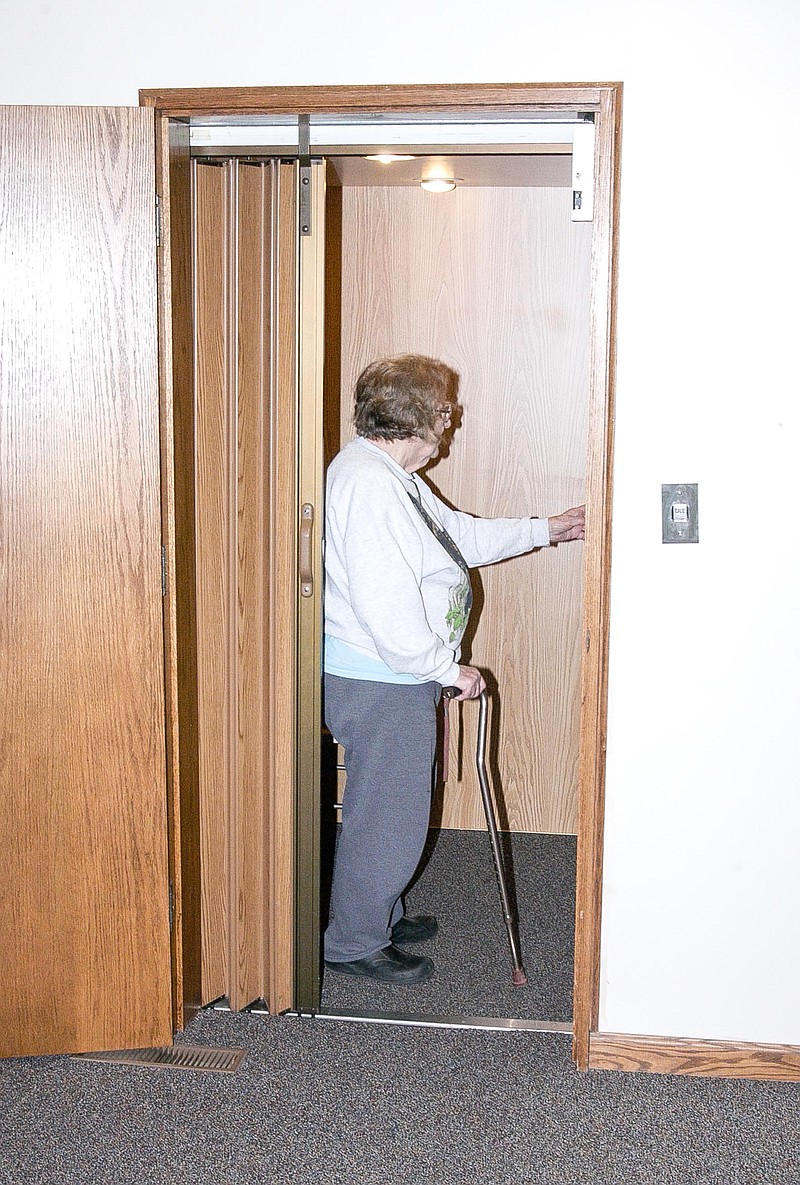Mobility often decreases as a people age. As mobility problems increase, whether because of age, injury, or other causes, people seek easier ways to go about their daily lives.
One of the biggest challenges often encountered by those who have decreased mobility is stairs. Some people, when they have trouble getting around, just take their chances on steps and stairs, even though it may be difficult.
Some people are inventive, though, and have managed to come up with ways to make it easier to go up and down steps and stairs.
For outside porch or decks steps, some put in a ramp. That is, if the steps aren't too steep. That is a topic for another time, though.
For the purposes being considered in this article, inside stairs and steps are the topic.
One thing that is very important for stairs is making certain they have very sturdy handrails. Other than that, there are a number of different options.
Half-step blocks: These are simple and can be installed on one side of the staircase. These blocks double the number of steps, while reducing the height of the steps for those who have a problem for which that will be helpful. This can be helpful, and works well for those who have arm and hand strength.
Stair climbing cane: This type of cane actually is sort of a half-step block, but it is attached to a cane handle. The user carries this device with them, stepping up on a step, then moving the cane block to the next step and stepping up on that step. A possible drawback would exist for a person who needs both arms to hold on to the rails while climbing the stairs.
Stair lift: There are several different types of stair lifts. An electric stair lift is installed on the wall beside the staircase. The person using it presses a button and remains seated while the stair lift does all the work, taking the people with decreases mobility up and down the stairs. An example of a stair lift in the City of California may be found on the rear stairway of the Moniteau County Historical Museum.
Stair-climbing wheelchair: This a special wheelchair which is used by the person on either flat surfaces or stairs. These wheelchairs, which became available about 15 years, require no help to operate. It cost thousands of dollars and was eventually discontinued. The Toyota company is in partnership to bring them back to the market. Available by doctor's prescription only, the user has to be assessed before one can be put in use.
Home elevators or lifts: An obvious answer to stair climbing for people with reduced mobility would seem to be the idea of a home elevator or lift. There are several problems with this answer, not the least of which is the cost. The total cost of an installed hydraulic home elevator could be $45,000 or more, according to one source. The same source spoke of a cost of $35,000 to $50,000 for a pneumatic elevator. Some of the lifts are much less, but are primarily intended for wheelchairs. How many private homes have either of these is unknown, but some are in public buildings, including several local churches.
The StairSteady: This device, which is apparently becoming available in the United States, was invented by a 15-year-old British girl. With a sturdy stairway handrail in place, a supporting handle is attached that slides on the rail. Putting weight on the handle locks it in place for the user to climb up or down using a secure bar handle. It folds out of the way so it doesn't interfere with other users or with the stairway appearance.
There is another option, according to "Independent Living" in a section called Smart Senior, Aug. 3, 2011.
Since stairs are everywhere - at work, at the mall, in homes - why not make stairs a good thing? Just use stairs as a means for exercise. After all, why use an exercise stair-climber, when the real thing is available everywhere.
Walking up a flight of stairs is a lot of work - the effort makes thighs burn, makes a heart thump, and will leave the stair climber short of breath in no time at all.
What does that sound like? Possibly exercise? Stair climbing is a cardio exercise. It uses all of the big muscles of the thighs, buttocks and calves. Keep your heart, lungs and lower body strong and you will be able to walk longer distances, go up and down stairs without getting out of breath, and sit down in and get up out of a chair more easily. This will help a person to be able to live independently, and take care of themselves longer.
"Think of stair climbing as exercise," the article said. "Watch your body mechanics. Land gently on the balls of your feet and hold on to the handrail. Start slowly. The same rules apply as with any other form of exercise. Rest your muscles by climbing every other day. Climb three times a week and give your muscles a chance to recuperate. This doesn't mean that you can't run down and do a load of laundry in-between, but three times a week, take those stairs seriously.
"Make stair climbing a part of your at-home exercise program."

